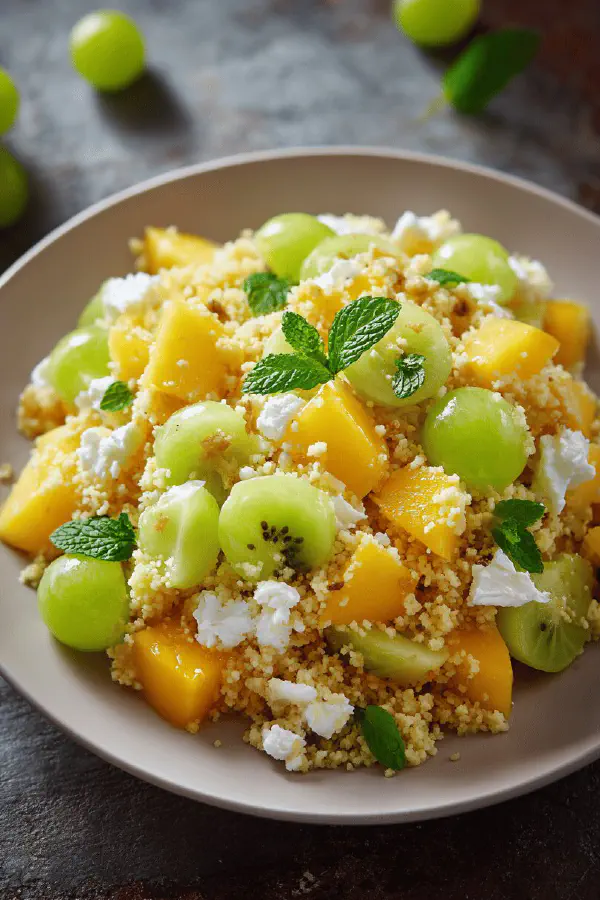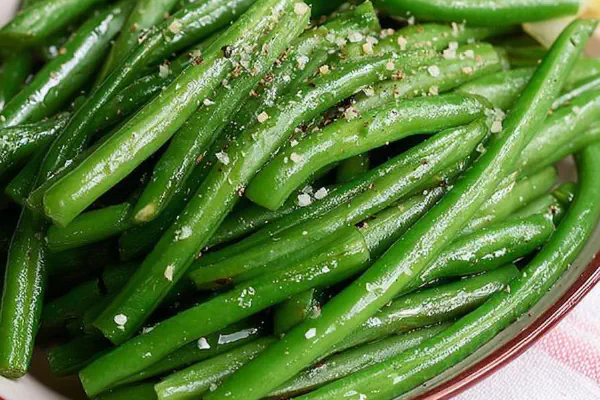Featured Recipe
Couscous Fruit Salad Remix

By Kate
"
A quick cold couscous fruit salad with a citrusy punch. Uses apple juice instead of orange for brightness; swaps peaches for mango and grapes for cherries. Yogurt adds creaminess, maple syrup sweetens naturally. Notes on grain fluffing and chill time. Fresh fruit topping for texture and color. Timing based on grain plumpness and aroma. A fresh dessert or snack that’s versatile, easy to adapt. Good for last-minute prep and forgiving if you overload with syrup or swap fruit varieties. No eggs, no nuts, vegetarian.
"
Prep:
20 min
Cook:
10 min
Total:
30 min
Serves:
4 servings
couscous
fruit salad
healthy eating
Mediterranean fusion
Introduction
Fruit salads with grains can go off quick—mushy, bland, or just wet junk. Getting couscous right takes finesse; not just splash hot water, dump fruit, and call it done. You want grains separate, each swollen with liquid but not puffed to slime. Picking juice over water adds flavor and sweetness. Apple juice works here better for its balance vs orange juice’s acid—allergy substitute or just a twist. This mix thrives on fresh mango—soft, sweet, juicy, unlike peaches that break down faster. Throw grapes in for textural contrast. Yogurt binds without heaviness; swapping Greek for plain or coconut-based yogurts works—watch for water-separating. Agave is a gentler sweetener than syrup or honey; still easily swapped. Timing tweaks essential—too long in hot liquid, couscous clumps into paste. Fluffing is key, aerates grains, keeps texture light. Fruit diced last ensures it stays firm, no pink mush. Chill or no chill, either way works but cold sharpens flavors. Mint’s optional but brightens. A practical recipe for when fresh fruit rules the day but you want substance beyond just sweet chunks.
Ingredients
About the ingredients
Apple juice replaces orange juice here; mellower acidity and less sharp citrus flavor. Any cloudy juice without pulp works. Couscous quantity bumped slight up for more body; less risk of watery paste. Mango swapped for peach due to texture stability—less prone to brown spots or over-ripening mush. Green grapes instead of cherries; grapes pop differently—little bursts, less fibrous skin to chew through. Yogurt Greek-style ups protein and creaminess. Agave syrup is typical sweetener here; lighter than honey and better dissolved in cool mixes. Optional mint inclusion adds complexity. If fruit is out of season, frozen berries chopped fine can work but note more liquid thrown off. Alternative to couscous: quinoa or bulgur for nuttier flavor but different texture and longer prep. Couscous should be fine and quick-cooking type. Store-bought or homemade yogurt should be unsweetened to avoid overpowering sweetness. If syrup or honey used, add slowly, then taste. Bright fruits key; avoid underripe or mealy varieties.
Method
Technique Tips
Start with cold juice reserved to briefly marinate fruit—this step infuses flavor without cooking fruit. Warm juice just below boil before pouring over couscous; bubbles at edges signal right temp for quick hydration without scorching. Cover same-size pot or bowl tightly to trap steam; steam, not boiling water, does the swelling—it prevents grain sogginess. Wait 6-7 minutes, not exact, but when volume doubles and you see plump grains slightly translucent. Fluff gently with fork—avoid stirring too hard or stirring with spoon that can mash grains into paste. Dice fruit on dry board right before adding to maintain texture and juices. Combine couscous cooled completely so yogurt does not break down or curdle. Gentle folding keeps creaminess intact. For serving: fresh grapes layered on top for textural pop. Chilling tightens flavors; if in urgent need, room temp still tasty with fruity aroma hitting first. Watch out for over-steeping couscous—if grains stick, loosen with a splash cold juice or yogurt. Mint is last-minute for freshness; bruised leaves turn bitter, so just tear gently or chiffonade. Any swap in ingredients demands extra tasting and adjusting sweetness and acidity. Timing is flexible but rely on sensory cues—soft, plump couscous, firm but juicy fruit, fresh aroma, creamy but airy yogurt mix.
Chef's Notes
- 💡 Tip: Don’t boil juice; simmer just enough. Bubbles at edges—that’s the sweet spot for couscous. Overcooked couscous? Sticky clumps. Always fluff after soaking.
- 💡 Another tip: Keep reserved juice cold. Marinate fruit last minute to keep fresh. Juiciness matters. Dicing mango on dry surface saves juice. No mush.
- 💡 Practical info here: Aim for ripe mangos; soft, fragrant, sweet. Sub pears or plums if mango isn’t right. Same for grapes over cherries—texture can differ.
- 💡 Details scattered: Over-soaked couscous? Rescue it with yogurt or juice splash. Adjust sweetness with agave, honey, or not. All about balance. Experiment.
- 💡 Final tip: Chill or don’t; flavors are still bright. Mercurial flavor profile, depending on ingredients. Dunking in fresh mint? Yes, but only add when serving.
Kitchen Wisdom
Why does my couscous clump?
Overcooked it, likely. Timing is key. If it sticks, fluff gently. Adding cold juice helps loosen.
Can I use other fruits?
Definitely. Pears, plums work fine. Seasonal fruits might taste better. Adjust sweetness if swapping fruits.
How to store leftovers?
No long-term plans. Keep in fridge, sealed tight. Use within 2-3 days. Fresh is best. Taste will fade.
What if my yogurt is watery?
Strain it using cheesecloth or paper towel. Thick is preferred. Watery yogurt means dish lacks creaminess.



